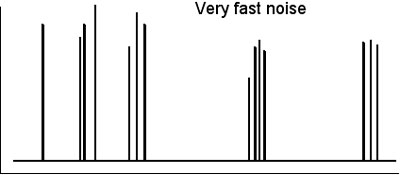Diagnosing 'bad' chromatograms
Harold McNair, Virginia Tech, USAAbstract Some basic troubleshooting. This chapter describes a number commonly occurring chromatograms where peaks show unexpected behaviour: compounds elute earlier, later, together, no peaks show up or other effects. The examples will help you to diagnose your chromatogram as well as to verify your hypotheses of the possible causes.
LevelBasic
Decrease in Retention time
Retention has decreased
List four (or five if you can) possible causes for this ![]() problem
problem
How would you verify the suspected cause for ![]() this problem?
this problem?
Increase in Retention time
Retention has increased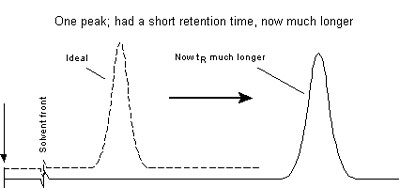
List four (or five if you can) possible causes ![]() for this problem
for this problem
How would you verify the suspected cause ![]() for this problem?
for this problem?
Excessively short Retention times
Short Retention times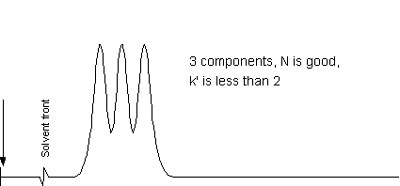
List four (or five if you can) possible causes for ![]() this problem
this problem
How would you verify the suspected ![]() cause for this problem?
cause for this problem?
No resolution
No separation takes place
List two possible causes for ![]() this problem.
this problem.
Poor resolution
Peaks are overlapping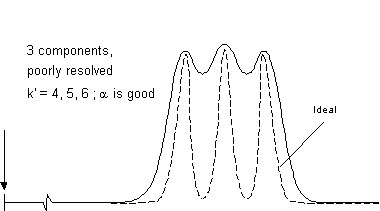
List the possible causes for ![]() this problem
this problem
Rank in proper order which you would do first. Basic factors are :
Distortion of peak shape
Peak is "tailing"
List four possible causes ![]() for this problem
for this problem
Peak splitting
Peak gets "shoulders" or is splitting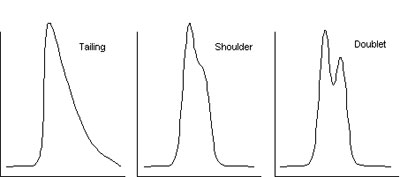
List possible causes for ![]() this problem
this problem
Distortion of peak shape
Peak is "fronting" 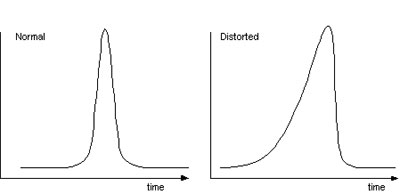
List 2 possible causes for ![]() this problem
this problem
No flow through column
No signal at all
List six possible causes for ![]() this problem
this problem
Describe how you would verify (in the lab) each possible cause
Ghost peaks
Unexpected peaks show up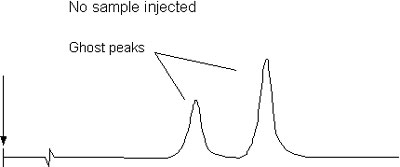
List three possible causes ![]() for this problem
for this problem
Describe how you would verify (in the lab) each possible cause.
Noisy baseline
Example 1: no sample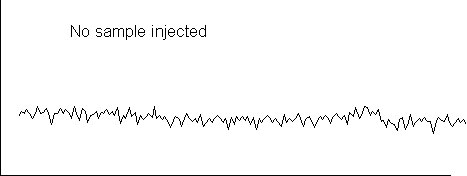
List possible causes for ![]() this problem above (example 1).
this problem above (example 1).
Example 2: very fast peaks